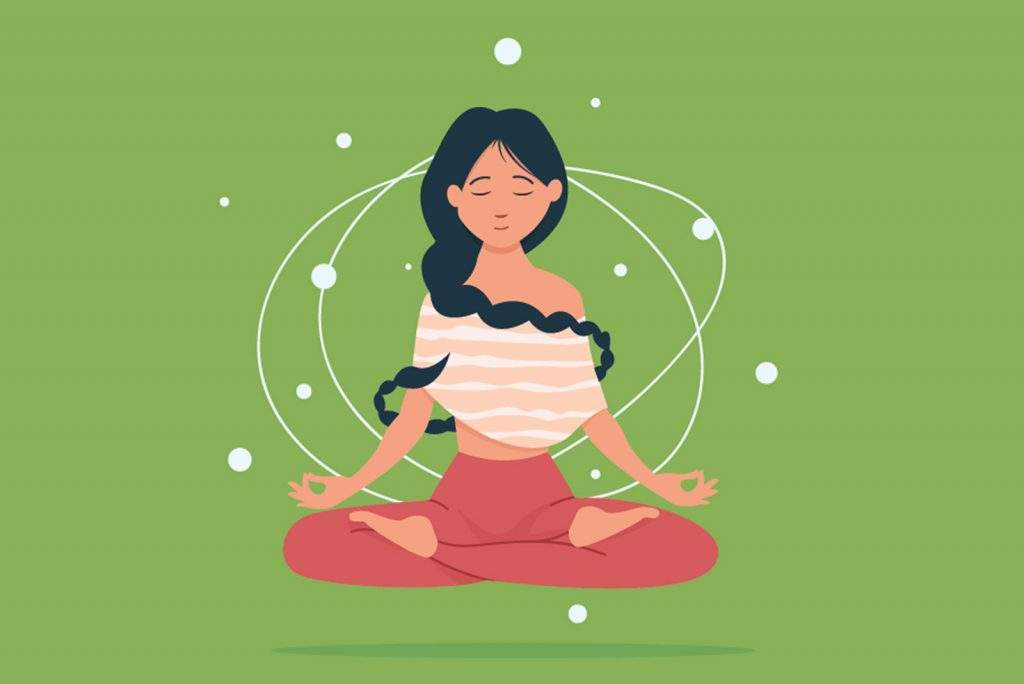You’ve no doubt heard that meditation is good for you. It can help you feel calmer and has a host of other benefits. However, for many people, descriptions of meditation aren’t appealing, and it sounds like just another thing you don’t have time to do.
Here are five meditation tips for beginners that will help overcome the dual problems of lack of appeal, and it seeming too daunting.

1. Start small, with three to five minutes (or less).
Some great new data shows that most beginner meditators started with three to five minutes. Even three minutes can feel like a darn long time when you first start meditating, so you could even start smaller. For example, paying attention to the sensations of taking three breaths.
2. Understand what meditation can do for you if you have issues with stress, anxiety, irritability, or overthinking.
Meditation is a great way to increase your resilience to stress. If you have anxiety, it will help reduce your general tendency towards physiological over-arousal and calm your nervous system. Meditation can help with irritability partly because it helps you learn how to recognize you’re having irritable thoughts before you’ve blurted them out in ways that end up generating stress for you (e.g.. nitpicking your partner in a way that causes a fight).
3. Understand the principles of meditation.
Beginning meditators often think the goal of meditation is to get to the point that they can focus without becoming distracted. A more useful goal, however, is becoming aware of when your mind has drifted sooner.
Becoming aware of what you’re thinking is the basis of successful cognitive therapy. You can’t restructure your thoughts if you haven’t first developed the ability to identify your thoughts.
Another useful goal for meditation beginners is being able to redirect your attention back to your point of focus without criticizing yourself.
4. Do meditation your own way.
Since walking helps people concentrate and reduces distractibility, a meditation that involves walking can be a great place to start. 10 minute walking meditation involving 1 minute of paying attention to each of
- the feeling of your body walking
- the feeling of your breath
- the sensations of air or wind on your skin
- what you can hear
- what you can see
Follow this with five minutes of open awareness where you allow anything you can observe or sense to rise up into your awareness. Don’t go looking for things to hear, see, or feel. Just let whatever rises up into your awareness do that and be naturally replaced by something else, whenever that happens.
During the open awareness portion, if your attention drifts to past, future, or evaluative thoughts, briefly go back to one of the points of focus to stabilize your attention.
You can adapt these instructions however you want. Make your practice your own. You’re in charge! For example, do a walking meditation in which you focus on one of the above points of focus for three minutes, then do three minutes of open awareness.
5. Reduce all-or-nothing thinking.
Realistically, there are only a small amount of people who will be willing to meditate on a regular basis. Another approach is to do formal daily practice of meditation (such as the walking meditation) for a brief initial period, and then start just incorporating meditation into your day in informal ways.
Doing a sustained period of formal daily practice when you begin meditation will:
- allow you to try different types of meditation
- give you enough comfort and familiarity with meditation that you can restart formal practice if you’re going through a particular period of stress or overthinking
- develop enough understanding of meditation to come up with your own ideas for informal meditation practices
